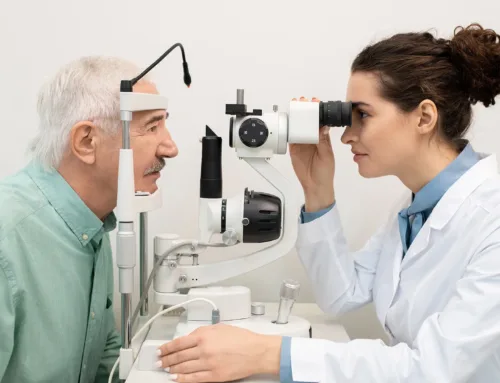When it comes to blurry or distorted eyesight, glasses and contact lenses offer a temporary solution to these vision problems. While glasses can be stylish, their prescription can become outdated quickly. Contact lenses are a great alternative if you’re okay with getting that close to your own eyes. But those who are tired of scratched lenses or lost contacts, are turning to LASIK eye surgery to correct eye conditions like astigmatism, farsightedness, and nearsightedness.
Let’s take a look at what astigmatism is and how LASIK corrects it permanently.
What Are the Signs of Astigmatism & What Is It?
Astigmatism is a common refractive eye condition that occurs in individuals who have corneas (lenses) that are irregularly (asymmetrical) shaped. The most common analogy used to explain astigmatism is simply that one has an oval or “football” shaped lens rather than a perfect sphere like a baseball.
You may hear your optometrist call your lenses spoon-shaped or even egg-shaped. While it is not considered an extremely serious issue, it can make daily life challenging as it results in blurry or distorted vision, as the light coming into the eye cannot be focused properly on your retina.
Without treatment, those with astigmatism will often experience headaches, eye strain, blurry night vision, eye pain, and feel the need to squint to see. If you have nearsightedness or farsightedness, it is quite possible that you have astigmatism as well.
This refractive eye condition can be treated with contact lenses and glasses, but it requires constant reassessment as your vision changes over time. This is why many individuals are choosing the other treatment option, LASIK for astigmatism correction, as it is a permanent solution.
How Astigmatism is Corrected with LASIK Eye Surgery
During a LASIK eye surgery procedure, our eye surgeons will use an ultra-precise, ultraviolet laser to adjust the shape of your cornea so that it is no longer asymmetrical. In doing this, any light that enters your eyes will be focused clearly on the retina, correcting all vision problems caused by astigmatism, and resolving all symptoms. When compared to glasses or contact lenses, which only compensate for astigmatism, LASIK actually fixes the root cause of the problem – an irregularly shaped cornea. After LASIK, it is unlikely that you will need glasses or contact lenses for daily use.
What to Expect From a LASIK Procedure for Astigmatism?
If you are worried about being anxious during your treatment, please let us know. Our LASIK surgeons will numb your eyes with eye drops and will explain the entire procedure in detail to you to help ease your worry. While LASIK can sound frightening at first, the time it takes is about 20-30 minutes total, with each eye taking about 10-minutes. The re-shaping process of your cornea only takes about 1-minute on each side. It takes 1-2 days for your eyes to fully heal. The procedure itself is a painless experience, and we do everything we can to ensure the comfort of our patients.
Give us a call at (407) 843-5665 or book online and find clarity today!




